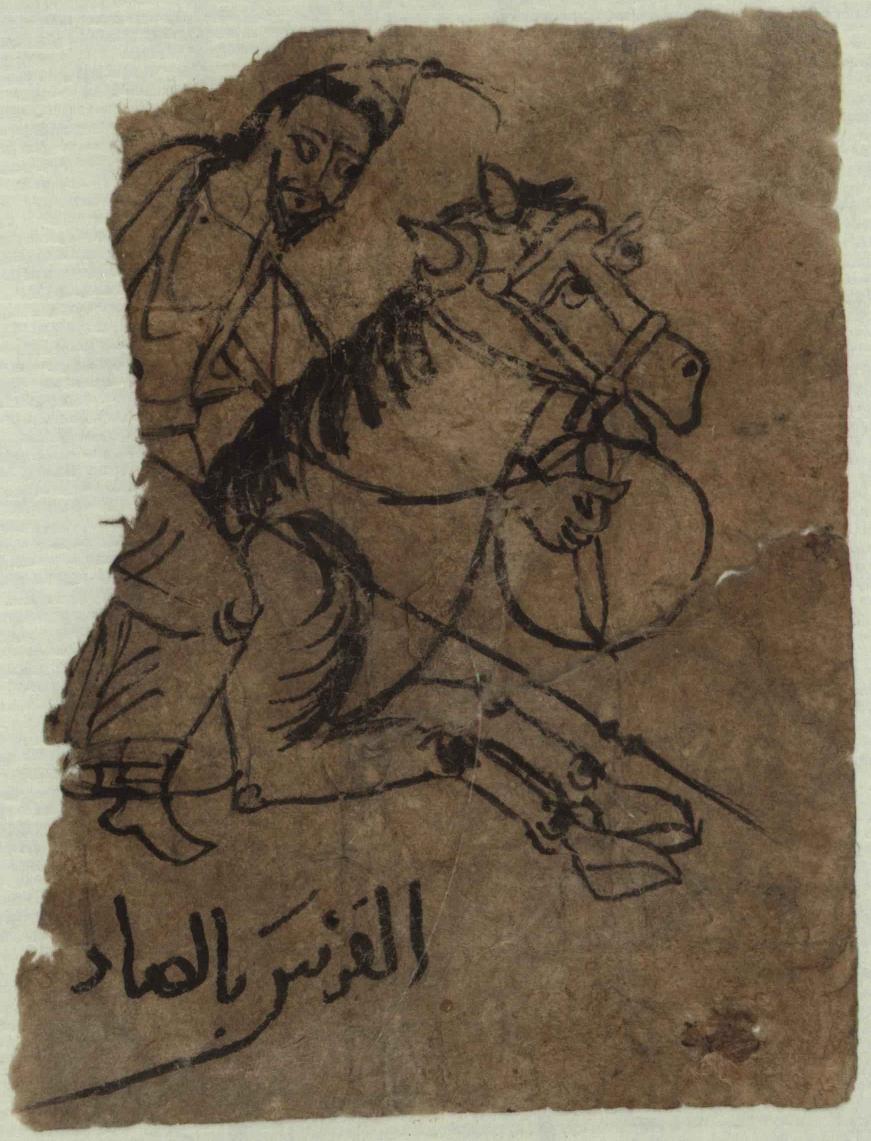
Try Amazon Audible Premium Plus and Get Up to Two Free Audiobooks
An Arab Cavalryman in a 10th Century Papyrus Drawing



Papyrus fragment, 10th century AD, Egyptian, Rainer Collection, Österreichische Nationalbibliothek, Vienna.
ID-Nr. RZ00001936
Inv.-Nr. A. Ch. 11416 Pap recto
Ein Arabisches Reiterbild des X. Jahrhunderts
9.5 x 7.3 cm
Signed by Abū Tamīm Ḥaydara - p.71, Painting in Islam, A Study of the Place of Pictorial Art in Muslim Culture By Thomas Arnold
Referenced on p17 MAA 89, Byzantine Armies 886-1118 by Ian Heath & Angus McBride
10th century Arab horseman. The Arabs had been the Empire's main enemy since the 7th century, and Emperor Leo VI said that it was the ever-present Moslem threat that convinced him of the need to write his military manual.
Referenced as figure 147 in The military technology of classical Islam by D Nicolle
147. Papyrus fragments 10th century AD, Egyptian, Rainer Coll., Bib. Nat, Vienna
Used as the source in The Armies of Islam 7th-11th Centuries by David Nicolle & Angus McBride for Plate D3 : Bedouin auxiliary, 10th century
This Arab tribesman has simple and rather old-fashioned equipment. Bedouin now had only a minor military rôle outside Arabia and parts of North Africa. His horse would probably have the sort of leather or rope 'loop stirrups' seen in Plate C1. (Papyrus fragment, Rainer Coll., Nat. Library, Vienna.)